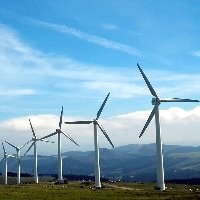(BRUSSELS) – The European Commission presented a European Wind Power Action Plan Tuesday to help the industry reach the agreed EU target of at least 42.5 per cent renewable energy by 2030.
Achieving the target, with an ambition to reach 45% renewables, will require a massive increase in wind installed capacity with an expected growth from 204 GW in 2022 to more than 500 GW in 2030.
Challenges facing the wind power sector’s future growth path include insufficient and uncertain demand, slow and complex permitting, lack of access to raw materials, high inflation and commodity prices, unsupportive design of national tenders, increased pressure from international competitors and risks on availability of a skilled workforce.
The Commission says the European Wind Power Action Plan Action Plan will help to maintain a healthy and competitive wind energy supply chain, with a clear and secure pipeline of projects, attracting the necessary financing and competing on a level playing field globally.
The action plan is accompanied by a Communication on delivering on the EU’s offshore energy ambition, including wind power, following up on the EU Offshore Renewable Energy Strategy adopted three years ago.
The Action Plan sets out immediate actions to be taken together by the Commission, the Member States and the industry; building on existing policies and legislation and focusing on six main areas:
- Acceleration of deployment through increased predictability and faster permitting. A record 16 GW of wind power installations were added in 2022, that is a 47% increase compared to 2021. This is however well below the 37 GW/year required to achieve the EU 2030 target for renewable energy. The Commission is launching the “Accele-RES” initiative with Member States to ensure swift implementation of the revised EU renewable energy rules, putting more focus on the digitalisation of permitting processes and technical assistance to Member States. In addition, Member States are encouraged to enhance the visibility of the project pipeline through wind pledges, transparent auction schedules, and long-term planning. Finally, the Commission will support the necessary build-out of electricity grids with a Grids Action Plan later this year.
- Improved auction design. Building on the proposed Net-Zero Industry Act and the reform of the Electricity Market Design, the Commission will support Member States in improving auctions with well-designed and objective criteria which reward higher value-added equipment and ensure that projects are realised fully and on time. Beyond the EU, Global Gateway projects will increase their use of strategic procurement standards. The Action Plan also foresees a cybersecurity risk assessment.
- Access to finance. To speed up investment and financing for wind energy manufacturing in Europe, the Commission will facilitate access to EU financing, notably through the Innovation Fund, while the European Investment Bank (EIB) will make de-risking guarantees available. The Commission also encourages Member States to make full use of the flexibility provided by the amended Temporary State aid Crisis and Transition Framework to support wind manufacturing in the EU.
- A fair and competitive international environment. To ensure that the wind sector can operate on a level playing field, the Commission closely monitors possible unfair trade practices which benefit foreign wind manufacturers and will continue to use trade agreements to facilitate access to foreign markets, while promoting the adoption of EU and international standards for the sector. The Commission will also engage with investors to identify and address obstacles to investment.
- Skills. Large-Scale Skills Partnerships for Renewable Energy will be a key forum to develop skills development projects. With the Net-Zero Industry Act, the Commission will also facilitate the launch of European net-zero industry skills academies including one dedicated to the wind sector, designed to support Member States actions to upskill and reskill workers. The academies will develop learning content and materials and will aim to train 100.000 learners within three years of establishment.
- Industry engagement and Member States commitments. The Commission will work with Member States and the wind industry on an EU Wind Charter to improve the enabling conditions for the European wind industry to remain competitive.
European Wind Power Package - guide
Factsheet on the European Wind Power Package
European Wind Power Action Plan
Communication on delivering on the EU offshore renewable energy ambition


